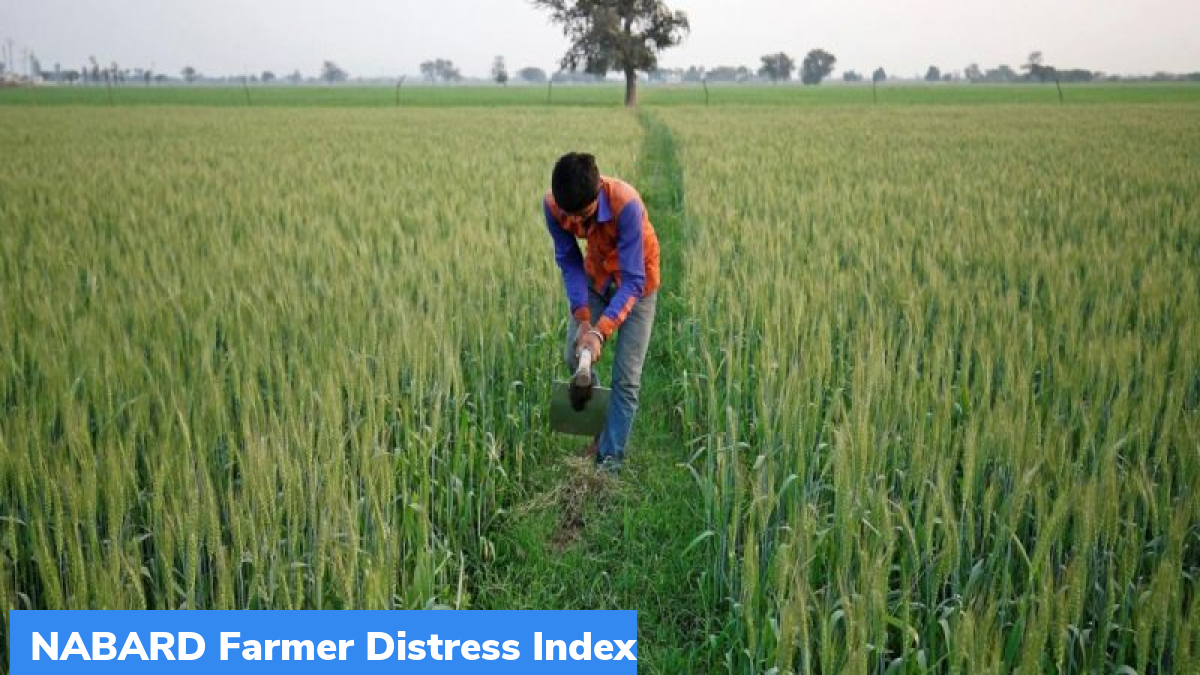NABARD Farmer Distress Index
With the marginal and small farmers of the country getting a raw deal regarding the waivers of farm loans, the National Bank for Agriculture and Rural Development (NABARD) is planning to create a farmer distress index (FDI) with the aim of tracking, identifying, and supporting the real distressed and needy farmers of India.
Overview:
- Depending on the distress level, the financial institutions and the government can decide on an appropriate support package instead of handing out a distress package to all the farmers as is the current practice.
- This index won’t be uniform across the nation as it will be changing depending upon the place’s stress levels.
- This index will help the government departments, financial sector, and insurance companies.
- The distress of a farmer is generally calculated by the extent of damage to their crops.
Study conducted
According to a study that has been jointly conducted by NABARD and Bharat Krishak Samaj (BKS) over 60 percent of high and very high distress small and marginal farmers (SMFs) have not received the benefits of farm loan waiver (FLW). Also, this exclusion rate was 60 percent for the SMFs who are in the medium distress category.
Receiving of benefits
According to the study, in Maharashtra, the SMFs were categorized as ‘low’ distress and they received the maximum FLW benefits. Close to 42 percent of the SMF in the state whose distress category was very high did not receive any benefits. In Uttar Pradesh, 47 percent of the SMFs who are in the very high distress category, and 45 percent in the high distress category did not receive the FLW benefits. The sugarcane farmers from UP and Maharashtra received the FLW benefits even though they had irrigated land and enjoyed price support. The farmers having mostly non-irrigated lands and growing crops of lower value especially those not procured by the government at MSP have little or zero access to the financial system. Also, there were complaints that the wealthy farmers are FLW benefits.
Elements of this index
The index will be integrating high-frequency data regarding climatic conditions, weather conditions, agricultural commodities, the debt burden on farmers, and the market. This index will be measuring variables like excessive rainfalls, monsoon rains, variations in soil moisture and temperature, dry spells and drought, the area under irrigation, the yield of major crops in each district, unusual frost, and depth of underground water. The marketing opportunities that are available to the farmer such as MSP support will also be assessed by this index. There will also be metrics on the existing debt burden of the farmers and their crop insurance access.
Benefits of this system
Based on the distress severity, the lenders and the government will be able to provide crop loan restructuring, unconditional grants, or complete debt waivers. The individual farmers can be assisted on a combination of individual farmers’ distress and district index that will be measured via the irrigation status of his income from crops, land, the average price in the districts Agricultural Produce Market Committee (APMC) markets, and average productivity of the district. Such an index will be able to help policymakers in monitoring and predicting farmer distress. The timely distress monitoring will help in formulating various mitigation measures. The index will also be providing a holistic view of farmer distress instead of just focusing on crop damages.
Month: Current Affairs - April, 2022
Category: Reports & Indexes Current Affairs


